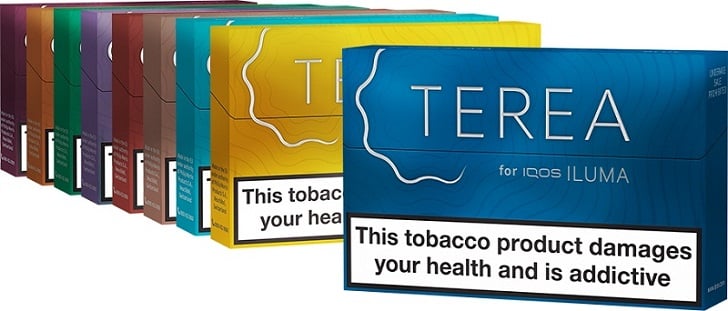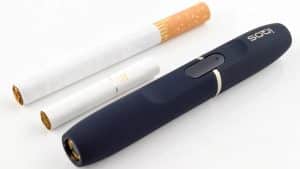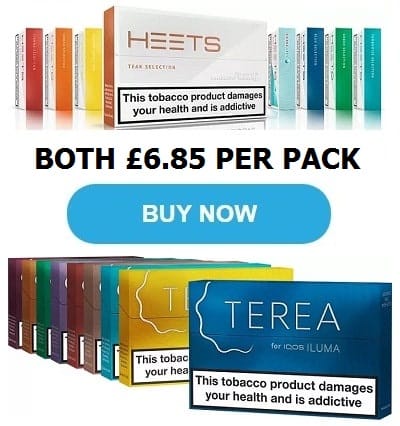
I’ve been involved in e-cig advocacy for years, so I’ve seen some truly awful studies. It takes a lot to surprise me these days because I’ve seen it all: Badly conducted experiments, tortured statistics, misrepresented data and straight-out bad science. It isn’t often I find myself shaking my head at just how crap something is, but step forward anyway South Korea’s Ministry of Food and Drug Safety, because you’ve achieved it.
After Japan, South Korea is one of the biggest markets in the world for heated tobacco products. For South Koreans, conventional vaping is just a niche hobby; if you want to quit smoking you go with HnB. The country is also one of the most varied markets. As well as the now-familiar iQOS and BAT’s newer Glo, there’s an indigenous competitor, too – the Lil from Korean Tobacco and Ginseng. We’re still waiting for KT&G to send us a Lil, by the way, but when they do you’ll be the first to know what it’s like.
UPDATE: We now have the Lil! Read our detailed review of it here.
Anyway, lots of South Koreans like HnB. All three products are selling well despite recent tax rises on the tobacco sticks for them, and smokers seem to be switching in pretty large numbers. So, as you’d expect, people who make a living telling smokers to quit are getting annoyed that the tobacco industry is doing their job better than they can.
So the knives are out for HnB in South Korea, and the Ministry of Food and Drugs just decided to have another go. This time their weapon of choice is an “independent” report by a group of Korean researchers that claims heated tobacco isn’t less dangerous than smoking. At this point I’m going to stick in a disclaimer and say that there’s no formal evidence that it is less dangerous than smoking. That’s going to take decades of research and data collection, and with the products being so new we obviously don’t have that yet. What we do know is that, according to absolutely everything we understand about toxicology, it would be very surprising indeed if they weren’t significantly safer.
The shocking details
So what does this report say? Well, nothing good. It’s basically a toxicological analysis of the sticks for all three of the devices on the market. The media aren’t reporting any details of the study – such as the methods it used or even who conducted it – so there’s no way to tell what sort of science is behind this, but going by the results it’s extremely poor.
The headline conclusion is that HnB is no safer than smoking because it has nasty chemicals in it. This is in fact true; HnB sticks – and the vapour they produce – do have nasty chemicals in them. The problem is that, while true, this isn’t actually very informative. As any toxicologist will happily tell you, almost everything has nasty chemicals in it. If the mere presence of nasty chemicals was actually a problem, none of us would live long enough to be born.
What matters is how much of those chemicals is present. This is often expressed as “The dose makes the poison,” and it isn’t exactly a radical new concept that the “independent researchers” weren’t aware of yet – it goes back to Paracelsus, and he died in 1541. Some public health activists might claim there’s “no safe level” of whatever they’re attacking this week – second-hand smoke, alcohol, sugar – but they’re talking rubbish. The fact is that there’s a safe level of anything – arsenic, cyanide, even plutonium. That safe level might be extremely low, but it does exist. No matter how toxic or carcinogenic something is, there’s a level below which it just isn’t going to do you any harm.
Obviously, if it’s above that level there is potential for harm, but it isn’t a simple harm/no harm binary. If you swallow slightly above the safe level of arsenic you might feel a bit ill, but you’re not going to die. Similarly, if you inhale slightly above the safe level of some of the chemicals in cigarette smoke your risk of some cancers may rise slightly, but it’s not going to skyrocket like it would if you were firing up 20 Bensons every day.
And the authors of this shoddy study totally ignore that fact. They accurately picked up on the fact that heated tobacco contains some of the same carcinogens as any other tobacco, but they totally ignored the relative concentrations in the vapour – and that is the only thing that matters. If they’d done their job properly they would have analysed the relative quantities and estimated a relative risk for that; instead they just found some nasty stuff and said “Yep, just as bad!” Sorry, but there’s no excuse for that – and their own data blows their argument to bits.
According to the report, analysis of HnB tobacco sticks found that they contained “up to five” human carcinogens. Just to put that into perspective, cigarette smoke contains at least 33 and even a humble carrot has over a dozen. If this report shows anything it’s that using an HnB device is, at least in terms of cancer risks, about as dangerous as eating salad.
Grasping at straws
The team also looked at two other components of both smoke and vapour – nicotine and tar. This is where they really lost contact with reality. They claimed that two of the products they tested produced more tar than an actual cigarette. This is where I would really like to know how they carried out the experiment, because in normal use there is just no way this is true. Tar is a mixture of combustion products, produced when tobacco burns – and HnB devices don’t burn the tobacco. It’s easy to see this by comparing the filters of a used Heet and a smoked cigarette; it’s tar that turns cigarette filters brown.
As for nicotine, their complaint about that was that all three products contained as much nicotine as a cigarette. Yes, they do. They’re supposed to, because if they don’t the devices won’t do what they’re supposed to do – give smokers an acceptable alternative to cigarettes. Any alternative to smoking depends on delivering enough nicotine that smokers are satisfied and don’t reach for a cigarette to deal with their cravings. Basically, the study is criticising HnB for being fit for purpose.
So does this study raise serious concerns about the risks of heated tobacco? Well, I think you can already guess what I’m going to say about that, can’t you? No, of course it doesn’t. It’s picking up on something that we already knew – that HnB vapour does contain some carcinogenic substances, although fewer of them and at lower levels than smoke does. It’s a reduced harm product, after all. The whole point is that, even if the harm isn’t totally eliminated, it’s much lower than continuing to smoke. That’s what basic toxicology tells us – and any study that conflicts with basic principles of science is wrong.












This is the same alarmist exaggeration as with all ‘independent’ studies about vaping which were always ready to claim vapour to be as dangerous as smoke every time they managed to detect trace amount of any potentially harmful substance. However, I got a bit unsettled by the findings regarding tar, mainly because of PMI’s reaction to the study. As reported by https://www.tobaccoreporter.com/2018/06/clarification-sought/, PMI just stated that WHO doesn’t require tar testing, and that smoke and vapour are diffent. Yet, they didn’t really make any claim that HEETS vapour does not contain any tar. I would definitely like to hear a more detailed PMI’s explanation concerning that.